Without gathering and studying data, we are unable to progress. Whether that’s through observation of the world around us, or academic study. Often the best way to improve is to study the history of what has come before and learn lessons from it.
That’s why the internet of things is such exciting technology, it allows us to monitor the way we interact with the world around us in incredible detail and then interpret that data to discover trends and associations that lead to new innovations and efficiencies.
The way we interact with and maintain the restroom is an area that benefits greatly from the internet of things, after all, we all have to go!
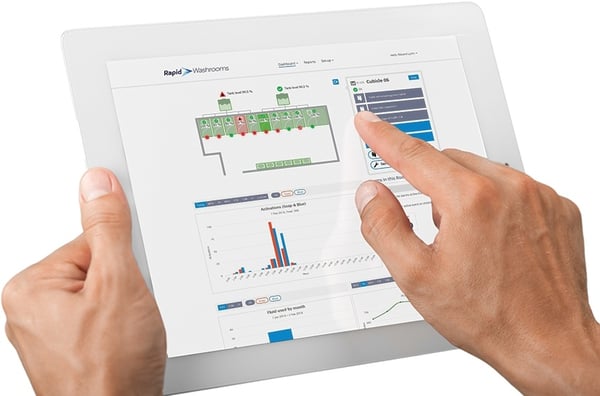
Vast amounts of labor and consumables go into making the restroom experience as seamless as possible for us. Anyone who has witnessed the organization and deployment of labor to maintain busy restrooms will know that it’s an expensive and complex procedure carried out with military precision, requiring front line soldiers, engineers and generals, who perform varied and skilled tasks, from mopping floors, fixing broken toilets, or scheduling the timely arrival and replacement of consumables and performing risk assessments on our water supplies to protect us from harmful bacteria such as legionella.
The industry is therefore always looking for the best way to improve efficiencies, be that cheaper soap or more efficient ways to clean, often facilitated through new technologies, such as automatic scrubbers to clean large areas of floors instead of traditional mopping.
By monitoring how people interact with the restroom, with internet connected products, we can interpret the data collected to develop efficiencies previously impossible while improving customer experience and benefiting the environment.
Here are 8 different insights gained through our deployment of internet connected restroom products, in some of the busiest locations in the world and how our customers used them.
1. How Often and When Restrooms Are Used.
By accurately understanding how many people use a restroom and at what times of day, we can plan cleaning in a more efficient manner. If for instance you currently clean all the restrooms in your building on a schedule, the same number of times per day at set times, you could be cleaning unnecessarily or at the wrong time.
Data can reveal that reducing cleaning activities in one location and moving that resource to a busier one, can yield better results with no extra labor costs. While looking at peaks and troughs in visitor activity can identify the best possible time to send those teams, for instance just after a very busy spell when it’s needed the most.
2. When Dispensers Are Running Out of Consumables.
By monitoring consumable levels and usage online, we can use the data to reduce waste. If your replacing consumables on a schedule, a certain amount of consumable is often disposed of each visit to ensure your customers don’t get caught short between visits. Real time data allows us to replace in a timely manner, as its required, giving customers the same or better experience with less waste.
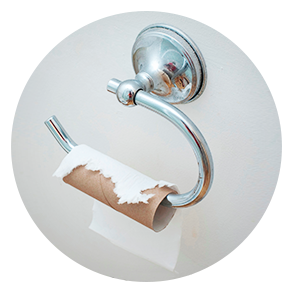
3. When Products Require Maintenance.
All moving parts wear and require maintenance. This doesn’t happen because of time, it happens because of use, or even potentially lack of use. By monitoring product usage online, you can perform planned, preventative, maintenance as opposed to reactive maintenance, reducing product failures and unplanned restroom down time and offering an overall better customer experience.
4. When Products Present a Potential Risk to Health.
By monitoring product usage online, we can identify other risks, such as faucets that have gone unused in a restroom for a prolonged period of time. Stagnant water in unused taps and showers is the leading cause of Legionella outbreaks that can endanger life and become a serious concern in health care environments and public places such as transport hubs and 24-hour gyms.
5. Failings in The Way Buildings or Restrooms Are Laid Out.
By monitoring the usage of restrooms within a building, or amenities within a restroom, we can identify failings of a buildings design or layout. For instance, during a trial deployment at a busy transport hub, we were able to identify that the toilet cubicles at the far end of the room were used significantly less than those at the front. In a single month the first toilet was used 15,000 times more than the last. However, in the location, restroom congestion was significant problem for the client with lines for the toilet causing complaint and bad feeling with the customers, as they left a plane after a long flight.
By identifying the problem with data captured from smart toilet cleaning products, a traffic light style, occupancy indicator was deployed to guide people to an available cubicle in a more efficient manner, reducing congestion and improving customer experience.
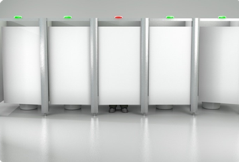
6. Accurate Information of Consumable Requirements.
By understanding through data the exact amount of consumables used within a given period, week, month or year, you can perform more accurate capital planning for the year ahead, allowing you to budget more effectively, reduce unnecessary expenditure, stock and waste but also allowing for more refined negotiations with alternative suppliers.
7. Customer Experience.
Internet connected customer feedback devices can alert your cleaning teams in real time when a problem occurs, allowing you to deal with it quickly before it affects customer service scores, equally it’s a great way to identify successful strategies and product deployments, such as new cleaning schedules or visual improvements, before deploying them to other stores or locations within a portfolio.
8. Environmental Goals.
Smart meters and smart faucets can reveal information relating to power and water consumption within a building, giving you the data you need to progress towards a more sustainable business model and achieve environmental targets, which is something we should all be focussed on following the latest IPCC report on global warming.
These are just some of the insights we’ve gained from working with internet connected devices and the customers who use them daily. Many of them come from the customers themselves, who always amaze us with the way they use the data our products produce and apply it to their own business model.
That’s the most exciting thing about the internet of things; the potential to gain new insights yet to be discovered. As new tools become available and we become more adept at interpreting the data our devices produce, we will start to find new and exciting ways to harness that data and improve the world around us by developing better, smarter buildings, products and services.
Get yourself connected and see what you can do to improve your business, your customer experiences and your impact on the environment.
Edward Lymn
Managing Director, Rapid Washrooms Limited
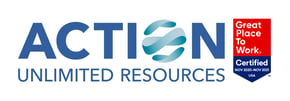
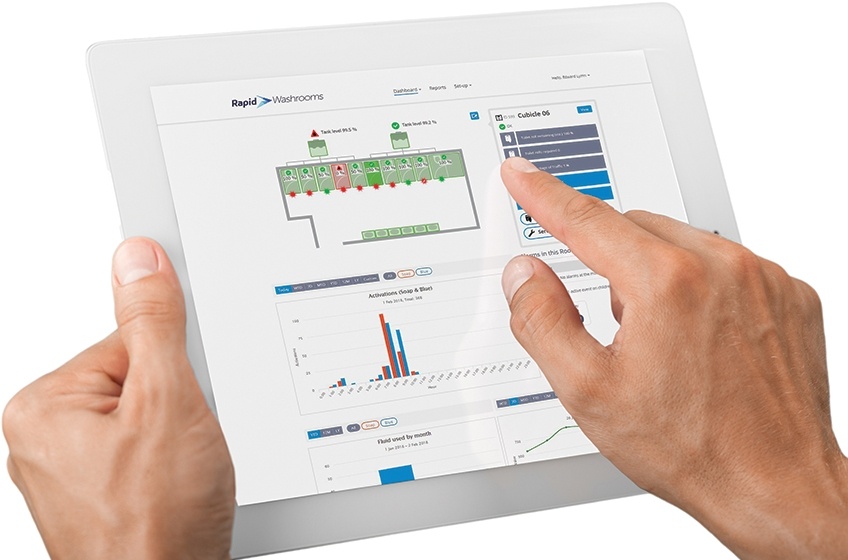

Enjoy this blog? Leave a comment or ask a question!